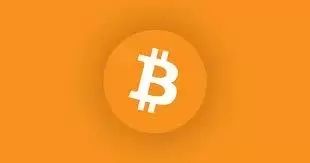 |
|
 |
|
 |
|
 |
|
 |
|
 |
|
 |
|
 |
|
 |
|
 |
|
 |
|
 |
|
 |
|
 |
|
 |
|
去中心化金融(DeFi)徹底改變了金融格局,提供由區塊鏈技術支援的無需信任、無需許可且透明的金融服務。 DeFi 中最重要的創新之一是藉貸,它允許用戶在沒有銀行等中介機構的情況下借入和借出加密資產。 Aave、Compound 和 MakerDAO 等 DeFi 借貸協議實現了貸款的民主化,使用戶能夠透過閒置資產賺取收益或立即藉入資金。

DeFi lending has undergone a remarkable evolution, transitioning from over-collateralized crypto-native lending to integrating real-world assets (RWAs) as collateral. This shift has been driven by the limitations of early DeFi lending models and the increasing demand for DeFi to interoperate with traditional finance.
DeFi 貸款經歷了顯著的演變,從過度抵押的加密貨幣原生貸款過渡到整合現實世界資產(RWA)作為抵押品。這種轉變是由早期 DeFi 借貸模式的限制以及 DeFi 與傳統金融互通的需求不斷增長所推動的。
In the early stages of DeFi, lending protocols like MakerDAO, Compound, and Aave offered a unique alternative to traditional lending systems. Borrowers could obtain loans without intermediaries, extensive credit checks, or centralized control. However, these protocols relied on a foundation of over-collateralization to mitigate risk in the absence of credit scores or borrower history.
在 DeFi 的早期階段,MakerDAO、Compound 和 Aave 等借貸協議為傳統借貸系統提供了獨特的替代方案。借款人無需中介機構、廣泛的信用檢查或集中控制即可獲得貸款。然而,這些協議依賴於超額抵押的基礎來在沒有信用評分或借款人歷史的情況下降低風險。
Understanding Over-Collateralization
了解超額抵押
In over-collateralized lending, borrowers must deposit collateral that exceeds the value of the loan they wish to take out. For example, a borrower seeking a $1,000 loan in a DeFi protocol like Compound might need to deposit $1,500 worth of Ether (ETH) or another cryptocurrency. This over-colliteration acts as a buffer to protect the lender in case the value of the collateral declines or the borrower fails to repay the loan.
在超額抵押貸款中,借款人存入的抵押品必須超過他們想要貸款的價值。例如,借款人在像Compound這樣的DeFi協議中尋求1,000美元的貸款可能需要存入價值1,500美元的以太幣(ETH)或其他加密貨幣。這種過度抵押可以作為緩衝,在抵押品價值下降或借款人無法償還貸款的情況下保護貸方。
This reliance on over-collateralization is a direct consequence of DeFi’s trustless nature. In traditional lending, banks assess borrowers’ creditworthiness based on credit scores, financial history, and income, which helps reduce the risk of default. In contrast, DeFi protocols operate without such systems, relying solely on smart contracts and collateral to secure loans.
這種對超額抵押的依賴是 DeFi 去信任性質的直接後果。在傳統貸款中,銀行根據信用評分、財務歷史和收入評估借款人的信用度,這有助於降低違約風險。相比之下,DeFi 協議在沒有此類系統的情況下運行,僅依靠智能合約和抵押品來獲得貸款。
Benefits of Over-Collateralized Lending
超額抵押貸款的好處
Despite its inefficiencies, over-collateralized lending played a crucial role in the initial growth of DeFi lending. It offered several advantages:
儘管效率低下,超額抵押貸款在 DeFi 貸款的最初成長中發揮了至關重要的作用。它具有以下幾個優點:
Limitations of Over-Collateralization
超額抵押的局限性
While over-collateralized lending protocols enabled the rapid growth of DeFi, they also presented several challenges that limited their scalability:
雖然超額抵押貸款協議促進了 DeFi 的快速成長,但它們也帶來了一些限制其可擴展性的挑戰:
The Shift Toward Under-Collateralization
朝向抵押不足的轉變
Recognizing the limitations of over-collateralized lending, the DeFi space began exploring alternatives that would allow for under-collateralized or even uncollateralized loans, similar to traditional lending. This shift aimed to make DeFi lending more efficient, accessible, and integrated with real-world financial systems.
在意識到過度抵押貸款的局限性後,DeFi 領域開始探索允許抵押不足甚至無抵押貸款的替代方案,類似於傳統貸款。這一轉變旨在使 DeFi 借貸更加高效、便捷並與現實世界的金融系統整合。
The Emergence of Under-Collateralized Lending
抵押貸款不足的出現
Under-collateralized lending protocols reduce the amount of collateral required to secure a loan. In some cases, these protocols enable users to borrow more than the value of the collateral they deposit. This shift is made possible through mechanisms that assess borrower risk and reputation, including on-chain credit scores, trust networks, and tokenized credit ratings.
抵押不足的貸款協議減少了獲得貸款所需的抵押品數量。在某些情況下,這些協議使用戶能夠借入超過其存入抵押品價值的資金。這種轉變是透過評估借款人風險和聲譽的機制來實現的,包括鏈上信用評分、信任網絡和代幣化信用評級。
One notable example of under-collateralized lending is TrueFi, a protocol that allows for uncollateralized lending based on borrower reputation. Borrowers on TrueFi are vetted through a rigorous approval process, and lenders rely on borrower reputation and financial metrics to assess risk. While this introduces some centralized elements into the otherwise decentralized DeFi space, it represents a significant step toward making DeFi lending more capital efficient.
抵押不足貸款的一個著名例子是 TrueFi,這是一種允許根據借款人聲譽進行無抵押貸款的協議。 TrueFi 上的借款人經過嚴格的審批流程進行審查,貸款人則依靠借款人的聲譽和財務指標來評估風險。雖然這將一些中心化元素引入了原本去中心化的 DeFi 領域,但它代表了朝著提高 DeFi 借貸資本效率邁出的重要一步。
Another approach to under-collateralization involves credit delegation, where users with excess collateral delegate borrowing power to trusted third parties. Aave, for example, introduced credit delegation through its “Aave Credit Delegation” system. In this model, a user with deposited collateral can delegate their borrowing capacity to another party, who can then take out a loan without needing to provide collateral themselves. This model leverages social trust and reputation to facilitate under-collateralized lending.
另一種解決抵押不足的方法涉及信貸委託,即擁有過多抵押品的用戶將借款權委託給受信任的第三方。例如,Aave 透過其「Aave 信用委託」系統引入了信用委託。在這個模型中,存有抵押品的用戶可以將其借貸能力委託給另一方,然後另一方可以在不需要自己提供抵押品的情況下獲得貸款。這種模式利用社會信任和聲譽來促進抵押貸款不足的貸款。
Advantages of Under-Collateralized Lending
抵押不足貸款的優點
Under-collateralized lending introduces several benefits over traditional over-collateralized models:
與傳統的超額抵押貸款模型相比,抵押不足貸款具有以下幾個優點:
However, under-collateralized lending also introduces new risks, particularly in terms of borrower default. DeFi protocols must carefully balance risk assessment, reputation management, and decentralized governance to ensure the sustainability of under-collateralized lending.
然而,抵押不足的貸款也會帶來新的風險,特別是在藉款人違約方面。 DeFi 協議必須仔細平衡風險評估、聲譽管理和去中心化治理,以確保抵押貸款不足貸款的可持續性。
Real-World Asset (RWA) Integration: The Next Frontier of DeFi Lending
現實世界資產 (RWA) 整合:DeFi 借貸的下一個前沿
The most transformative development in DeFi lending is the integration of real-world assets (RWAs) into the lending protocols. This shift bridges the gap between the traditional financial system and DeFi, unlocking a vast market of tangible assets that can be tokenized and used in DeFi lending.
DeFi 借貸領域最具變革性的發展是將現實世界資產(RWA)整合到借貸協議中。這一轉變彌合了傳統金融體系和 DeFi 之間的差距,釋放了可代幣化並用於 DeFi 借貸的有形資產的廣闊市場。
What Are Real-World Assets?
什麼是現實世界資產?
Real-world assets refer to physical or traditional financial assets that exist outside the blockchain but can be tokenized and represented on-chain. These assets include real estate, commodities, invoices, bonds, and equities. By tokenizing RWAs, DeFi protocols can extend lending services to include a wider range of collateral types, significantly expanding the market size for DeFi lending.
現實世界資產是指存在於區塊鏈之外但可以在鏈上代幣化和表示的實體或傳統金融資產。這些資產包括房地產、商品、發票、債券和股票。透過將 RWA 代幣化,DeFi 協議可以將借貸服務擴展到更廣泛的抵押品類型,從而顯著擴大 DeFi 借貸的市場規模。
The Role of Tokenization
代幣化的作用
Tokenization is the process of converting real-world assets into digital tokens that can be traded and used on blockchain platforms. In the context of DeFi lending, tokenized real-world assets can be used as collateral, just like cryptocurrencies. For example, a real estate property could be tokenized and represented as digital tokens on a blockchain, allowing the owner to use these tokens as collateral for a DeFi loan.
代幣化是將現實世界的資產轉換為可以在區塊鏈平台上交易和使用的數位代幣的過程。在 DeFi 借貸的背景下,代幣化的現實世界資產可以用作抵押品,就像加密貨幣一樣。例如,房地產可以被代幣化並在區塊鏈上表示為數位代幣,允許所有者使用這些代幣作為 DeFi 貸款的抵押品。
Tokenization enables fractional ownership of assets,
代幣化可以實現資產的部分所有權,
免責聲明:info@kdj.com
所提供的資訊並非交易建議。 kDJ.com對任何基於本文提供的資訊進行的投資不承擔任何責任。加密貨幣波動性較大,建議您充分研究後謹慎投資!
如果您認為本網站使用的內容侵犯了您的版權,請立即聯絡我們(info@kdj.com),我們將及時刪除。
-

- 比特幣真的可以達到每枚硬幣100萬美元嗎?
- 2025-04-03 18:55:13
- 長期以來,比特幣一直是金融界的終極過山車。從2009年作為利基數字實驗的卑微開始到今天的數量千萬美元資產類別的地位
-

- 民主黨立法者按SEC調查特朗普總統與世界自由財務的聯繫
- 2025-04-03 18:55:13
- 民主黨立法者正在向美國證券交易委員會(SEC)施加有關唐納德·特朗普總統與加密貨幣公司世界自由的聯繫的詳細信息
-

-

-

-

-

-

-

- Memecoin市場繼續從零售和機構投資者那裡汲取資本
- 2025-04-03 18:35:13
- Memecoin市場繼續從零售和機構投資者那裡汲取資本,最新的鏈度指標表明這是一個值得關注的市場。


























































